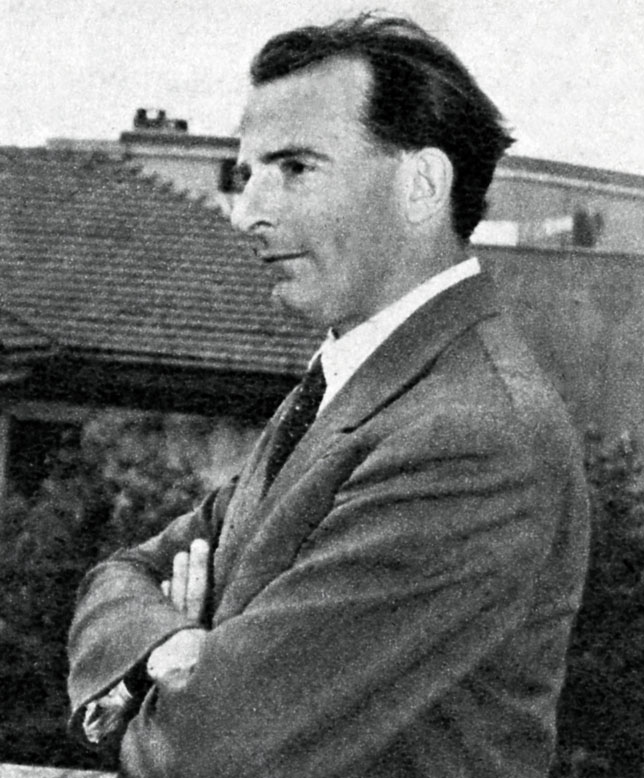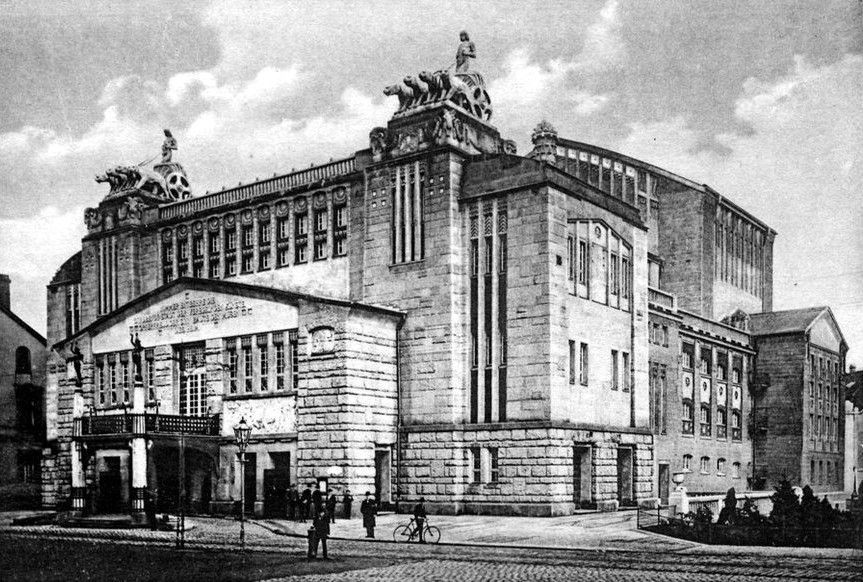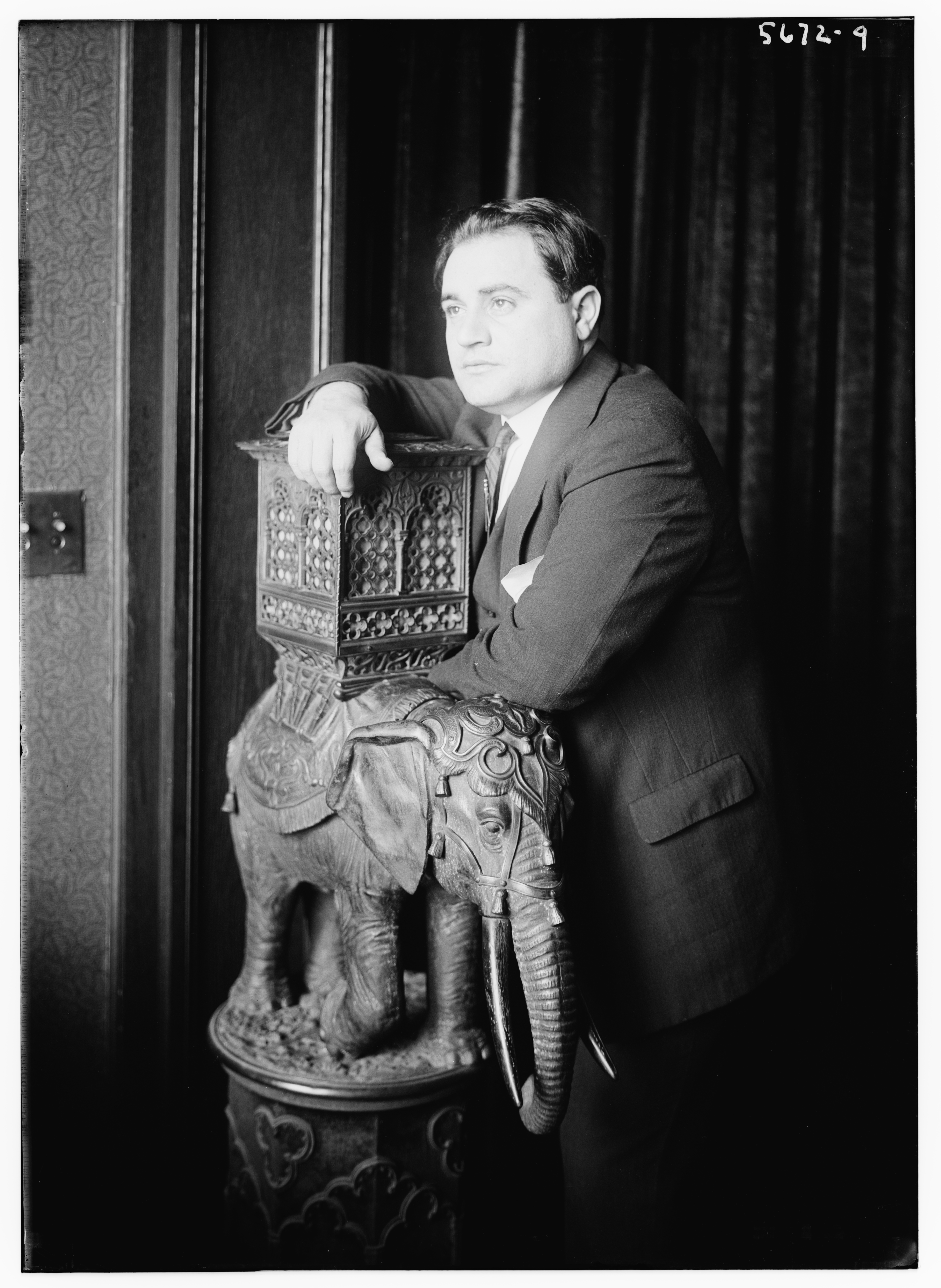|
Gloria (opera)
''Gloria'' is a tragic opera in three acts by Francesco Cilea with an Italian libretto by Arturo Colautti. A variation on the Romeo and Juliet story and set in 14th century Siena, the libretto is based on Victorien Sardou's 1874 play ''La Haine (drama), La Haine'' (''Hatred''). The opera premiered on 15 April 1907 at La Scala conducted by Arturo Toscanini with Solomiya Krushelnytska in the title role. ''Gloria'' was a failure at its premiere when it was withdrawn after two performances and fared little better in the 1932 revised version, although there have been two late 20th century revivals. It proved to be Cilea's last staged opera. In the 43 years following the premiere of ''Gloria'' he worked on two or three further operas which were never performed and continued to compose chamber and orchestral music. Composition Like Cilea's earlier operas, ''L'arlesiana'' (1897) and ''Adriana Lecouvreur'' (1902), ''Gloria'' takes its title from its female protagonist and is based on a Fre ... [...More Info...] [...Related Items...] OR: [Wikipedia] [Google] [Baidu] |
Francesco Cilea
Francesco Cilea (; 23 July 1866 – 20 November 1950) was an Italian composer. Today he is particularly known for his operas ''L'arlesiana'' and ''Adriana Lecouvreur''. Biography Born in Palmi near Reggio di Calabria, Cilea gave early indication of an aptitude for music when at the age of four he heard a performance of Vincenzo Bellini's ''Norma'' and was greatly affected by it. He was sent to study music at the Conservatorio di San Pietro a Majella in Naples, where he quickly demonstrated his diligence and precocious talent, earning a gold medal from the Ministero della Pubblica Istruzione (Department of Education). In 1889, for his final examination at the end of his course of study, he submitted his opera ''Gina'', with a libretto by Enrico Golisciani which was adapted from the old French play ''Catherine, ou La Croix d'or'' by Baron Anne-Honoré-Joseph Duveyrier de Mélésville (1787–1865). This "melodramma idilico" was performed in the college theatre, and it attracted ... [...More Info...] [...Related Items...] OR: [Wikipedia] [Google] [Baidu] |
Giovanni Zenatello
Giovanni Zenatello (22 February 1876 – 11 February 1949) was an Italian opera singer. Born in Verona, he enjoyed an international career as a dramatic tenor of the first rank. Otello became his most famous operatic role but he sang a wide repertoire. In 1904, he created the part of Pinkerton in ''Madama Butterfly''. Career Zenatello showed musical promise from a young age. His singing teacher in Verona originally trained him as a baritone but he never felt comfortable in this range and later switched to the higher tenor register. Nonetheless, it was as a baritone that he made his professional debut at Belluno in 1898. His tenor debut—as Canio—did not come until the following year, at Naples. Zenatello's operatic career gathered momentum during the early years of the 20th century, and on 17 February 1904 he created the role of Pinkerton in the world première of Giacomo Puccini's ''Madama Butterfly'' at La Scala, Milan. La Scala was Italy's leading opera house, and he r ... [...More Info...] [...Related Items...] OR: [Wikipedia] [Google] [Baidu] |
San Gimignano
San Gimignano () is a small walled medieval hill town in the province of Siena, Tuscany, north-central Italy. Known as the Town of Fine Towers, San Gimignano is famous for its medieval architecture, unique in the preservation of about a dozen of its tower houses, which, with its hilltop setting and encircling walls, form "an unforgettable skyline". Within the walls, the well-preserved buildings include notable examples of both Romanesque and Gothic architecture, with outstanding examples of secular buildings as well as churches. The Palazzo Comunale, the Collegiate Church and Church of Sant' Agostino contain frescos, including cycles dating from the 14th and 15th centuries. The "Historic Centre of San Gimignano" is a UNESCO World Heritage Site. The town also is known for saffron, the Golden Ham, and its white wine, Vernaccia di San Gimignano, produced from the ancient variety of Vernaccia grape which is grown on the sandstone hillsides of the area. Territory The municipality ... [...More Info...] [...Related Items...] OR: [Wikipedia] [Google] [Baidu] |
Flaviano Labò
Flaviano Labò (February 1, 1927 – February 13, 1991), was an Italian operatic tenor, particularly associated with heroic roles of the Italian repertory. Labò was born at Borgonovo Val Tidone, near Piacenza. While in the army, he came to the notice of the conductor Antonino Votto, and subsequently studied with Ettore Campogalliani in Parma, Renato Pastorino in Milan and Valentino Metti in Piacenza. He made his stage debut at the Teatro Municipale in Piacenza, as Cavaradossi in ''Tosca'', in 1954. He quickly sang widely in Italy and various European opera houses, as well as in South America, before making his debut on November 29, 1957, at the Metropolitan Opera in New York, as Alvaro in ''La forza del destino'', where he sang thirteen roles in eight seasons, including Alfredo in ''La traviata'', Manrico in ''Il trovatore'', and Radamès in ''Aïda''. In 1959, he sang at the New York City Opera as Calaf in Puccini's ''Turandot'' (conducted by Julius Rudel) and Rodolfo in ' ... [...More Info...] [...Related Items...] OR: [Wikipedia] [Google] [Baidu] |
Margherita Roberti
Margherita Roberti (1925 – January 23, 2021Obituary: American Soprano Margherita Roberti Passes Away, Aged 95 ''Operawire''. Retrieved February 12, 2021.) was an American tic who had an active international career that spanned from 1948 to 1988. Although she performed throughout the world, Roberti achieved her greatest success and popularity in Italy. A , Roberti drew parti ... [...More Info...] [...Related Items...] OR: [Wikipedia] [Google] [Baidu] |
Turin
Turin ( , Piedmontese language, Piedmontese: ; it, Torino ) is a city and an important business and cultural centre in Northern Italy. It is the capital city of Piedmont and of the Metropolitan City of Turin, and was the first Italian capital from 1861 to 1865. The city is mainly on the western bank of the Po (river), Po River, below its Susa Valley, and is surrounded by the western Alps, Alpine arch and Superga Hill. The population of the city proper is 847,287 (31 January 2022) while the population of the urban area is estimated by Larger Urban Zones, Eurostat to be 1.7 million inhabitants. The Turin metropolitan area is estimated by the Organisation for Economic Co-operation and Development, OECD to have a population of 2.2 million. The city used to be a major European political centre. From 1563, it was the capital of the Duchy of Savoy, then of the Kingdom of Sardinia ruled by the House of Savoy, and the first capital of the Kingdom of Italy from 1861 to 1865. T ... [...More Info...] [...Related Items...] OR: [Wikipedia] [Google] [Baidu] |
Fernando Previtali
Fernando Previtali (16 February 1907 Adria, Italy – 1 August 1985, Rome, Italy) was an Italian conductor, particularly associated with the Italian repertory, especially Verdi operas. He studied at the Giuseppe Verdi Music Conservatory in Turin, and later with Franco Alfano. He began his career as assistant conductor to Vittorio Gui in Florence from 1928 to 1935, and later in Genoa from 1935 to 1936. He was artistic director of the RAI National Symphony Orchestra from 1936 until 1953, and conducted the Verdi cycle in 1951, to commemorate the composer's 50th death anniversary, and left recordings of ''Nabucco'', '' Ernani'', ''La battaglia di Legnano'', ''Il trovatore'', and ''Don Carlo''. He also conducted at all the major opera houses of Italy, and was principal conductor at the Teatro Colón in Buenos Aires in the 1960s. He was appointed artistic director of the Teatro Regio in Turin in 1970, and later of the Teatro Comunale in Genoa. He conducted the first performances ... [...More Info...] [...Related Items...] OR: [Wikipedia] [Google] [Baidu] |
Bologna
Bologna (, , ; egl, label= Emilian, Bulåggna ; lat, Bononia) is the capital and largest city of the Emilia-Romagna region in Northern Italy. It is the seventh most populous city in Italy with about 400,000 inhabitants and 150 different nationalities. Its metropolitan area is home to more than 1,000,000 people. It is known as the Fat City for its rich cuisine, and the Red City for its Spanish-style red tiled rooftops and, more recently, its leftist politics. It is also called the Learned City because it is home to the oldest university in the world. Originally Etruscan, the city has been an important urban center for centuries, first under the Etruscans (who called it ''Felsina''), then under the Celts as ''Bona'', later under the Romans (''Bonōnia''), then again in the Middle Ages, as a free municipality and later ''signoria'', when it was among the largest European cities by population. Famous for its towers, churches and lengthy porticoes, Bologna has a well-preserved ... [...More Info...] [...Related Items...] OR: [Wikipedia] [Google] [Baidu] |
Castello Sforzesco
The Castello Sforzesco (Italian for "Sforza's Castle") is a medieval fortification located in Milan, northern Italy. It was built in the 15th century by Francesco Sforza, Duke of Milan, on the remnants of a 14th-century fortification. Later renovated and enlarged, in the 16th and 17th centuries it was one of the largest citadels in Europe. Extensively rebuilt by Luca Beltrami in 1891–1905, it now houses several of the city's museums and art collections. History The original construction was ordered by Galeazzo II Visconti, a local nobleman, in 1358 – c. 1370; this castle was known as the ''Castello di Porta Giova'' (or ''Porta Zubia''), from the name of a gate in walls located nearby. It was built in the same area of the ancient Roman fortification of ''Castrum Portae Jovis'', which served as '' castra pretoria'' when the city was the capital of the Roman Empire. It was enlarged by Galeazzo's successors, Gian Galeazzo, Giovanni Maria and Filippo Maria Visconti, until it beca ... [...More Info...] [...Related Items...] OR: [Wikipedia] [Google] [Baidu] |
Theater Dortmund
Theater Dortmund is a theatrical organization that produces operas, musicals, ballets, plays, and concerts in Dortmund, Germany. It was founded as the Stadttheater Dortmund in 1904. Supported by the German Government, the organization owns and operates several performance spaces. In 2010 the Ruhr district was a European Capital of Culture, Theater Dortmund is a partner of the related program ''RUHR.2010'' in the fields ''Music'' and ''Theater and Dance''.Dortmund at RUHR2010, including ''Musik'' and ''Theater und Tanz'' (in German) Stadttheater Dortmund [...More Info...] [...Related Items...] OR: [Wikipedia] [Google] [Baidu] |
Beniamino Gigli
Beniamino Gigli ( , ; 20 March 1890 – 30 November 1957) was an Italian opera singer (lyric tenor). He is widely regarded as one of the greatest tenors of his generation. Early life Gigli was born in Recanati, in the Marche, the son of a shoemaker who loved opera. His parents did not, however, view music as a secure career. Benjamino's brother Lorenzo became a well-known painter. Career In 1914, he won first prize in an international singing competition in Parma. His operatic debut came on 15 October 1914, when he played Enzo in Amilcare Ponchielli's '' La Gioconda'' in Rovigo, following which he was in great demand. Gigli made many important debuts in quick succession, and always in ''Mefistofele'': Teatro Massimo in Palermo (31 March 1915), Teatro di San Carlo in Naples (26 December 1915), Teatro Costanzi di Roma (26 December 1916), La Scala, Milan (19 November 1918), Teatro Colón, Buenos Aires (28 June 1919) and finally the Metropolitan Opera, New York City (26 November ... [...More Info...] [...Related Items...] OR: [Wikipedia] [Google] [Baidu] |
Maria Caniglia
Maria Caniglia (5 May 1905 – 16 April 1979) was one of the leading Italian spinto sopranos of the 1930s and 1940s. Life and career Caniglia was born in Naples and studied at the Music Conservatories of Naples with Agostino Roche. She made her professional debut in Turin as Chrysothemis in '' Elektra'' in 1930. The same year she sang Magda in Respighi's ''La campana sommersa'' in Geneva and Elsa in Wagner's ''Lohengrin'' in Rome and made her debut at La Scala in Milan as Maria in Pizzetti's ''Lo straniero''. She sang regularly at La Scala until 1951 in the leading dramatic soprano roles in opera, such as ''Un ballo in maschera'', ''La forza del destino'', ''Aida'', ''Andrea Chénier'', ''Tosca'' and ''Adriana Lecouvreur''. She was particularly successful in roles from the latter verismo school. On the international scene, Caniglia appeared in venues such as the Palais Garnier, Covent Garden, and the Teatro Colón. She made her debut at the Metropolitan Opera in New Yor ... [...More Info...] [...Related Items...] OR: [Wikipedia] [Google] [Baidu] |










